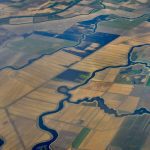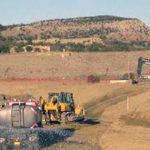- Senate Bill 72 requires new long-term supply goals.
- The California Department of Water Resources (DWR) will identify 9 million acre-feet of new water by 2040.
- The plan expands participation to tribes, labor, and environmental justice groups.
- DWR will coordinate statewide workshops through 2028.
- Lawmakers expect more transparent, data-driven water planning.
Monday, November 10, 2025 — Last month, Governor Gavin Newsom signed Senate Bill 72 , authored by Senator Anna Caballero, creating one of the most detailed water-planning mandates in state history. The California Department of Water Resources (DWR) described the measure in its November 5, 2025 update
, authored by Senator Anna Caballero, creating one of the most detailed water-planning mandates in state history. The California Department of Water Resources (DWR) described the measure in its November 5, 2025 update  as a turning point for how the state will prepare for a hotter and drier future.
as a turning point for how the state will prepare for a hotter and drier future.
Under the law, DWR must develop a “data-driven playbook” that identifies 9 million acre-feet of additional water supply by 2040. That goal is designed to offset expected losses caused by rising temperatures, evaporation, and shifts in rainfall and snowpack patterns.
Expanding the California Water Plan.
SB 72 updates the long-standing California Water Plan, first established decades ago, to require that it be revised every five years, with the next update due by December 31, 2028.
The update will then repeat in 2033, when DWR must also revise the interim planning target for 2050.
The new statute directs DWR to broaden its Advisory Committee beyond traditional water agencies to include tribal governments, labor groups, environmental organizations, and environmental-justice advocates.
All meetings will be public, with opportunities for written and oral comment.
This structure ensures that water supply decisions reflect the needs of communities historically under-represented in statewide water planning.
Building a Resilient Supply Portfolio.
The bill instructs DWR to examine a wide range of strategies that could collectively meet the 9-million-acre-foot target. Those include new or expanded storage, stormwater and groundwater recharge, recycled and desalinated water, and continued conservation through efficiency standards such as California’s “Making Conservation a Way of Life” regulation.
Each five-year plan update must analyze regional water needs for urban, agricultural, environmental, recreational, and tribal uses.
It must also describe project costs, benefits, and environmental impacts, along with the permits and approvals that would be required to implement them.
Importantly, DWR must estimate how much additional water will be necessary to maintain public-trust resources and safe drinking water for all Californians.
Recognizing Climate and Economic Realities.
Legislators cited decades of megadrought in the Colorado River Basin, declining snowpack, and increasingly variable precipitation as evidence that traditional water management no longer fits the new climate reality. They also recognized that California’s vast agricultural economy—worth over $50 billion annually—depends on securing reliable supplies for both surface and groundwater systems.
According to DWR’s findings, losing 10 percent of existing supplies could mean a reduction of 6 to 9 million acre-feet of usable water statewide.
By establishing measurable long-term targets now, SB 72 seeks to ensure that water planners can respond before shortages become permanent.
Funding and Implementation.
Although SB 72 does not include new funding, DWR will work with the Department of Finance to identify potential sources for implementation. Agency officials emphasized that cost analysis and public participation will proceed in tandem through the California Water Plan Update 2028 process, with open workshops across regions most affected by drought or flooding. As those discussions unfold, DWR will continue using its existing advisory structure to promote transparency and collaboration among agencies, stakeholders, and the public.
Image via the California Department of Water Resources : A drone view of a section of the California Aqueduct within the California State Water Project.
: A drone view of a section of the California Aqueduct within the California State Water Project.
FAQ
What does SB 72 require DWR to do?
The law requires DWR to prepare and update the California Water Plan every five years, establish long-term water-supply targets, and identify strategies to meet them.
What is the 9 million acre-foot goal?
It represents the volume of additional water, conservation, or storage capacity that DWR must identify by 2040 to offset expected climate-related losses.
Who will participate in shaping the plan?
The Advisory Committee now includes representatives from agriculture, local governments, tribes, labor, public-sector water employees, environmental groups, and environmental-justice interests.
When will the next update occur?
The next full update, California Water Plan 2028, is due by December 31, 2028, followed by the 2033 update that will establish a 2050 planning target.
Does SB 72 provide funding?
No. The bill authorizes planning and coordination but leaves funding to future budget actions through the Department of Finance and legislative appropriations.
Why is this important?
California faces long-term water shortages as snowpack declines and dry years become more severe. SB 72 sets the framework for ensuring that water supply planning keeps pace with changing climate and population conditions.





